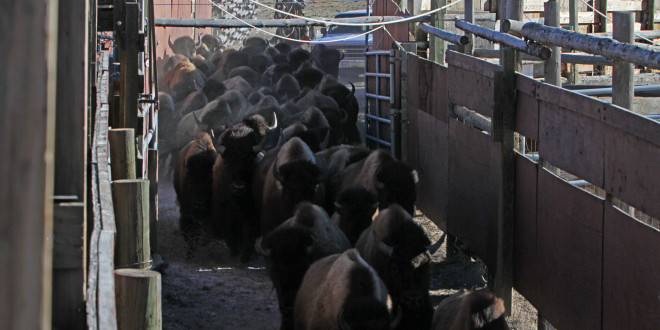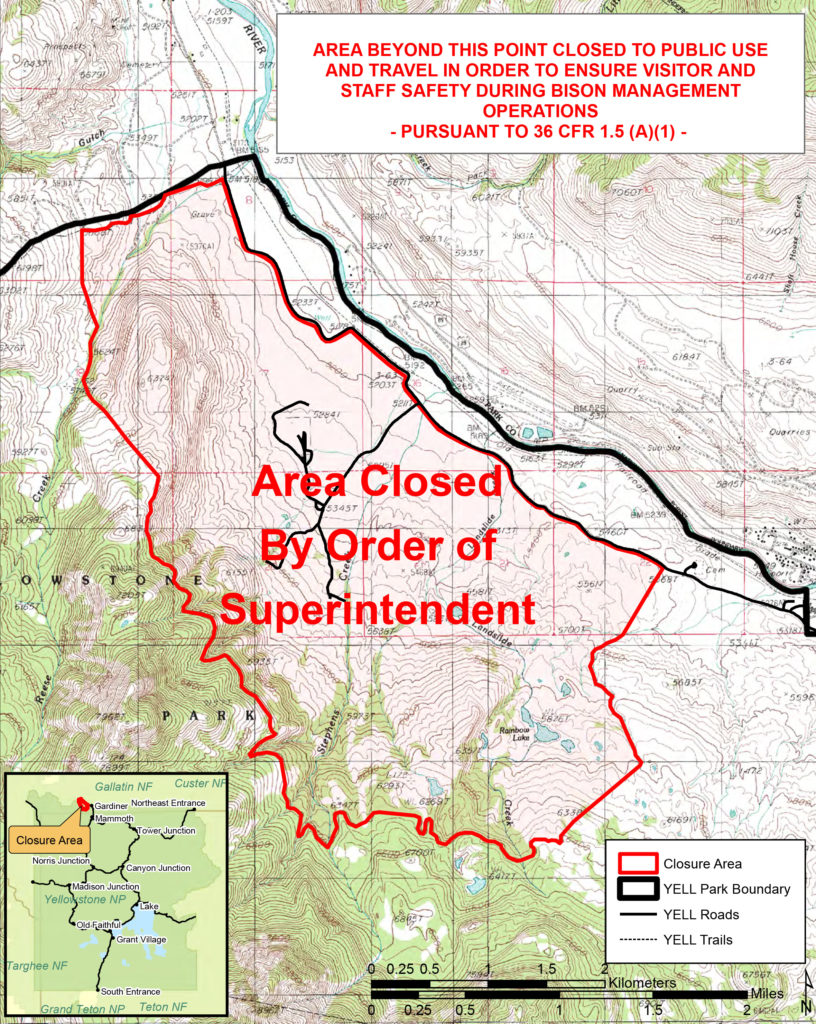Yellowstone National Park has instituted a temporary area closure around Stephens Creek in anticipation of this year’s bison season.
According to a Yellowstone press release, the closure went into effect today, January 16, 2018.
During the closure period, the public will be prohibited from traveling through the area “in order to ensure visitor and staff safety during bison management operations.”
Stephens Creek is home to Yellowstone’s Bison Capture Facility, where bison are corralled and tested for brucellosis. Historically, those who tested positive were shipped to slaughter, with meats and hides distributed among Native American tribes.
In addition to the bison facility, Stephens Creek is also home to a native plant nursery and firing range.
This area is closed annually during bison operations, especially since the surrounding area is a draw for bison hunters.
You can see a map of the closure area below, courtesy of the National Park Service.
The hunting and slaughter of Yellowstone bison takes place under the Interagency Bison Management Plan (IBMP). Introduced in 2000, the IBMP mandates that state, federal, and tribal agencies work to prevent the spread of bison out of park boundaries.
Earlier this month, the IBMP partner agencies signed off on an operating plan for 2018, which you can read here.
Currently, there are an estimated 4,800 bison in Yellowstone National Park, down from approximately 5,500 bison. Last year, over 1,200 bison were slaughtered or hunted, one of the largest culls in recent years. This year, IBMP agencies are looking to take 600 to 900 bison.
Bison operations a source of fierce criticism from conservation groups and wild bison advocates, who argue culling is unnecessary and egregious.
Although operations take place in Yellowstone’s Northern Range, the culling of bison has had a disproportionate effect on the park’s central herd, which has declined markedly in recent years. Since the central herd is well within park boundaries, where hunting or killing of bison is strictly prohibited, these bison are nominally safe from operations.
Bison are killed primarily because most of the park’s herd carries brucellosis, a disease that induces abortions in cattle and costs livestock producers dearly in terms of quarantine costs and possible herd loss.
However, there has never been a case of bison-to-cattle brucellosis transmission. Further, a growing body of research shows elk are far more likely to transmit brucellosis to cattle than bison.
More recently, critics of bison management practices have called on livestock producers to shoulder the burden of managing their herds for brucellosis, rather than foisting the work onto the agencies collected under the IBMP. In particular, critics have called on producers to possibly explore vaccinating their cattle against brucellosis.
This summer, Yellowstone officials broached the possibility of building a quarantine facility within the existing Stephens Creek bison facility, after a deal to transfer some bison to a quarantine facility on the Fort Peck Indian Reservation in eastern Montana ran into issues. Currently, the park is working toward having a working quarantine area, following guidelines issued by Montana state veterinarian Marty Zaluski.
 Yellowstone Insider Your Complete Guide to America's First National Park
Yellowstone Insider Your Complete Guide to America's First National Park







You must be logged in to post a comment.